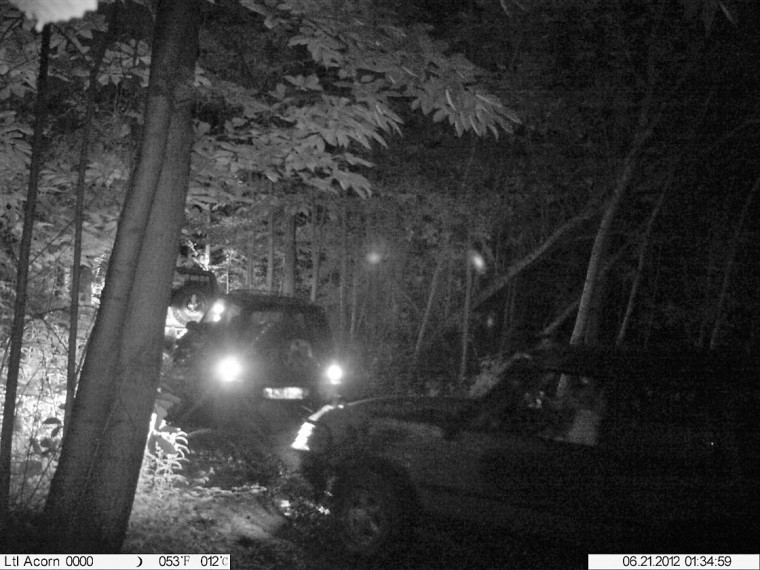Farming landowners are contributing to the cost of extra police cover which helps to protect part of the Kent countryside.
They are supporting Securing the Landscape, an innovative project in which the Kent Downs area of outstanding natural beauty (AONB) collaborates with the police, landowners, farmers and others to stop illegal and inappropriate access.
Eleven years after the project was launched in the Medway Gap, Nick Johannsen, director of the Kent Downs AONB Unit, says it is still working.
Before the project began, landowners in the area had to withdraw from some land management. “A large number of people had withdrawn from accessing the countryside for quiet recreation because of concerns about others accessing illegally in a 4×4,” said Mr Johannsen, who gave evidence about the project to a House of Lords committee examining the Natural Environment and Rural Communities Act 2006.
“It was hard to manage land in any kind of way, and some of the rights of way were in a terrible state because of inconsiderate four wheel driving by some. In places this was bandit land.” Events were organised on Facebook, and there was fly tipping, too.
Originally, the Securing the Landscape project came out of a much bigger landscape partnership scheme called the “Valley of Visions” (VOV) which began in 2007. That was when the Kent Downs AONB Unit secured £1.8 million from the Heritage Lottery Fund to help pay for the scheme’s total cost of £2.5 million. VOV covered an area between Maidstone and Rochester where the River Medway cuts through the Kent Downs.
VOV was a wide ranging scheme which planned to make landscape, habitat and heritage conservation improvements across the area in an integrated suite of projects.
A key to the scheme’s success was dealing with the illegal access and anti social activity in the area – which is how Securing the Landscape began. To support the project, Kent Police helped VOV’s partners apply the police national intelligence model to a wider partnership for the first time. This encouraged more reporting of incidents, and eventually a police community support officer (PCSO) patrolling in a four wheel drive was deployed to the area with a special constable.
Today, PCSO Kim Lidbury is still in place, and Rick Bayne, landscape partnership manager for the Kent Downs AONB unit, said her presence has had a significant impact on reducing illegal activities in the area. PCSO Lidbury began her work in 2012, and VOV came to an end in 2013. Since then, the £40,000 annual cost of the PCSO has been paid for by large private sector organisations involved in quarrying and housing which have farming tenants and own large pieces of land in the area; the Birling Estate, which has farmland in the area; Natural England; Plantlife International; Kent Wildlife Trust; town and parish councils; and others.
Measures were put in place to help PCSO Lidbury reduce illegal incidents before she took up her post. Holly Hill was one of the hot spots for illegal activity, and an experimental traffic regulation order (ETRO) and permit system were both introduced on the byway to restrict access at certain times. There were access points off the Holly Hill byway which led to chalk grassland where farmers had grazed livestock on sites of special scientific interest. “But the farmers were reluctant to carry on grazing until the illegal access by 4X4s was addressed,” said Mr Bayne. In the end, expensive, heavy steel fencing filled with concrete proved to be the only way to stop the 4x4s going on to the land.
In a wooded area next to the chalk downland, felled trees were used as barriers to prevent access by 4x4s. To stop winches on the 4x4s being used to pull the trunks out of the way, heavy steel rods were driven through the wood into the ground. To stop the trunks being sawn up, recessed wire was fitted along their length.
“We used different measures to fit different circumstances,” Mr Bayne said. Covert wildlife cameras were used in places where there was no public access to record 4×4 convoys crashing through woodland, and the information was sent to the police. This partnership approach by all the organisations involved was crucial to VOV’s and Securing the Landscape’s success. “Before VOV, there were multiple organisations trying to tackle the same issues, but in an unintegrated way,” Mr Bayne said. “The partnership gave us the ability to react quickly when issues arose. We were able to apply the resources and finances available together, rather than individually.”
Indications are that there has been an 80% reduction in targeted activities from before VOV until today. More locally, the ETRO at Holly Hill has reduced illegal motorised access in the woodland by 99% based on covert camera recording and incidents reported to police.
What will happen to Securing the Landscape in the future? More than one million people live within a kilometre of the AONB’s boundary, and the population growth trajectory for Kent is very rapid. The AONB is currently running a statutory review of its management plan for local authorities, a process which happens every five years. The next plan will take effect from 2019, and will be post Brexit.
As part of the review, Mr Johannsen conducts expert discussions on issues such as access, farming and woodland in a series of meetings. “Nearly every one of those meetings has talked about good access and recreation. Five years ago at the last review, that subject was just not nearly so prominent as an issue.”
Pictured: Hidden cameras photographed this vehicle convoy at night time on Holly Hill




